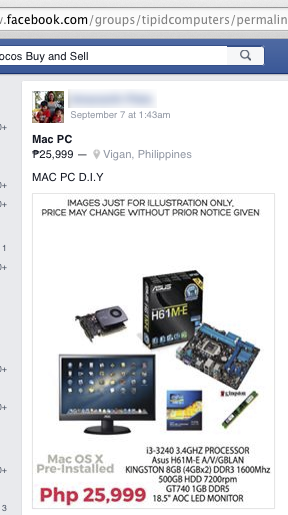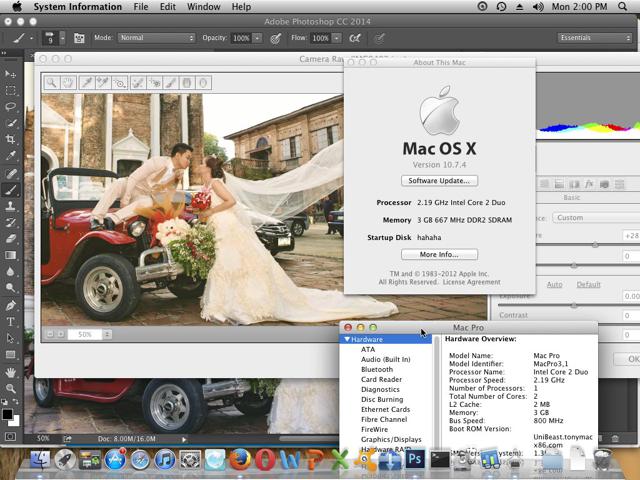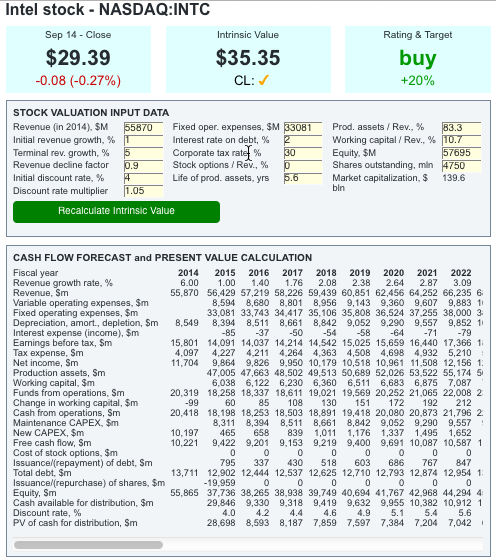Intel Processors: The Choice Of Apple And Hackintosh Computer Builders
Apple (AAPL) opted to use its own A9X ARM-based processor for its iPad Pro. However, this is still somewhat a blessing for Intel (INTC) because the iPad Pro is unlikely to cannibalize sales of Intel-powered MacBooks.
The other positive thing coming out of the ARM-based iPad Pro is that millions more hackintosh users will likely buy the Surface 3 or the Surface Pro 3. The continuing absence of touchscreen-friendly MacBooks or iMacs will inspire creative professionals to buy Windows 2-in-1 tablets. They can then convert them to hackintosh productivity machines.
Why It Matters
A YouTube video showed Apple's Mac OS X Yosemite 10.10 already works well with the touchscreen-enabled Lenovo (LNVGY) IdeaPad U430 Ultrabook. The U430 is a $1,000++ high-end laptop, which uses a 4th-gen Intel Core i7 processor.
The proliferation of Intel-based Windows/Linux touchscreen laptops like the $499 Surface 3 opens up a new opportunitythat caters to the market segment that Apple ignores with its $1,000+ MacBooks/Mac Pros with no touchscreen displays.
OEMs like Lenovo will sell more of its higher-end laptops that are Mac OS X friendly once more people learns about its touchscreen compatibility.
UK-based Touch Base also sells software that helps people create touchscreen-enabled hackintosh machines like the Surface Pro 3. There are millions of digital artists who liked the Surface 3 because of its heavy duty design utilization.
Readers cannot therefore dismiss the revenue stream from Intel-made hackintosh processors, motherboards, and chipsets. In spite of Apple suing and winning against Mac cloner Psystar in 2008, the hackintosh global industry is actually a thriving market. The CultOfMac article already hinted that up to 2 million individuals were members of the hackintosh community last year.
But I say there are more people now doing hackintosh builds due to Apple's free giveaway of Mac OS X Mavericks and Yosemite. The new Mac operating systems' unannounced support for touchscreen operations could also encourage more creative professionals to buy touchscreen-enabled laptops/desktops for hackintosh conversion.
California-based Quo Computer is still able to sell a customized $269 Intel-powered motherboard (packaged with custom BIOS software) that lets people build top-of-the-line hackintosh machines.
The Intel 7 Series chipset allowed Gigabyte and Quo Computer to create the Mac OS X-friendly Z77MX-QUO-AOS motherboard. Quo says the AOS stands for Any Operating System and Apple has yet to find a way to file a legal suit against it. The best Mac Pro clone hackintosh builds now are those using Gigabyte motherboards with Intel Series 7 chipsets and Core i7 processors.
The opportunity in Intel catering to hackintosh users is easily understood when we consider that there are Americans willing to spend to more than $2,000 to build a hackintosh alternative to the iMac 5K, which has maxed-out configuration price of $4,400.
The different laws in Europe also allow third-party companies in Great Britain to build and sell hackintosh computers on eBay (EBAY) UK. Long-time Germany-based Mac clone vendor PearC still sells its hackintosh products.
Learned investors should never dismiss the total addressable market that is offered by lawfully-approved hackintosh products especially in mature markets like the European Union. The combined purchasing powers of dissatisfied Apple Mac customers in rich countries like Germany, United Kingdom, France, Italy, and the Netherlands is certainly more than just a few million bucks.
Even in the Philippines, entrepreneurs are now selling Intel-powered $1,000 hackintosh computers on online stores and on Facebook (FB).

(Source: Alcaraz Research)
The 25,999 pesos ($559.12) that the lady from Vigan is charging for her custom hackintosh build is way more attractive that what Apple Philippines' charges for its (basic no-monitor included/no discreet GPU) Mac Mini 2014 model, 24,990 pesos ($537.40).
My point is that the hackintosh revolution is proliferating across the globe because of the substantial savings and customization/upgrade options it offers.
The GPU and Intel processors of MacBooks and iMacs are almost impossible to upgrade or replace. On the other hand, Apple tolerates hackintoshers because it still gets a cut when hackintosh users buy software or games from the Mac App store.
There are creative professionals who build Intel-powered hackintosh computers and then buy Apple's $300 Final Cut Pro software for editing HD videos.
Hackintosh Help Ushered In Apple's Shift To Intel Processors
It was the late Steve Jobs who actually started the idea in 2001 of a hackintosh - or putting Mac OS X on computers not made by Apple. Sony (SNE) rejected Jobs' offer of pre-installing Mac OS X on Intel-powered Vaio laptops in 2002.
However, Jobs apparently was impressed with the easiness of porting Mac OS X to an Intel x86-powered Vaio laptop that it eventually helped Apple transition from PowerPC to Intel x86 processor for all its Mac computers in 2006.
The robust sales of Intel-powered Mac OS X computers therefore owes a lot to the decision of Jobs to shift to Intel's x86 processors. Psystar and PearC would not have existed without Jobs' idea of a hackintosh for the Vaio.
I have a 2006 Mac Mini and a 2009 13-inch MacBook. But I also still often use an old hackintosh, a OS X Lion 10.7.4 machine with Intel Core 2 Duo CPU and 1GB GeFore GT 9500 GPU. The temperature-raising process of long-duration Photoshop editing is not very friendly on the MacBook.
The hackintosh on the other hand can handle dozens of hours of Photoshop CC 2014 editing without any overheating problems. Another advantage of a hackintosh is that most graphic software now rely on GPU-acceleration and most Macs from Apple today have weak discreet and/or embedded accelerators.

(Source: Alcaraz Research)
I used UniBeast and MultiBeast from TonyMac to create my hackintosh. Mac OS X Lion identifies it as a Mac Pro 3.1. I opine that millions of tightwad graphics artists like me will remain loyal to Intel when it comes to hackintosh image editing workstations.
Final Thoughts
The financial impact to Apple of 1 million people possibly not buying $2,000 iMacs is already worth billions. Intel, on the other hand still benefits because the Core i3 to Core i7 processors are very popular among big-spending hackintosh builders who abandon Apple-branded computers.
The growing (not a tiny niche) hackintosh commercial industry is therefore a small but still significant tailwind for Intel. Apple can continue to sell its very expensive Mac Pros and MacBook Airs. Other European or Asian companies (or individuals) will market cheaper clones of them using the same Intel processors/motherboards.
It would be nicer though if Apple will consider using Intel's XMM 7360 LTE modem or a RealSense camera for some of the more expensive cellular-enabled iPad Pro models in the future. Apple's cult-like brand appeal means an iPad Pro will still sell more units than Microsoft (MSFT) could ever do with its Surface Pro.
INTC is a Buy. Apple and its imitators/rivals will continue to rely on Intel x86 processors for their mid-range and high-end laptops and desktop computers.

(Source: X-fin.com)
Disclosure: The author is long AAPL, INTC, MSFT,




Nicely done. I've been more impressed with Microsoft's Surface line than Apple. If you want a million apps, go with Apple. If you want a better system, go with Microsoft.
I have to agree, just followed you ;-)